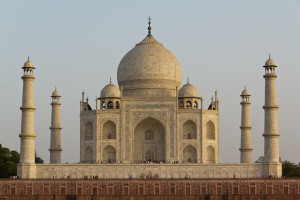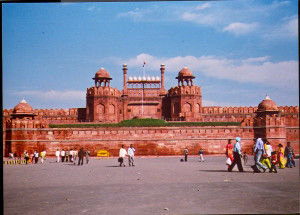Agra is also known as the Land of palaces. Not just palaces, it also has a lot of intricate and beautiful architecture. Even the tombs are elaborately adorned. Agra is the perfect spot for a tourist and students of Architecture. Even the climate in Agra is very inviting and suitable. The city is well designed, where even the houses show huge detailing in their design. On close inspection, even the interiors of the buildings show the unreal imagination that the architects probably had. Every building, looks like it had been designed to adorn the city, designed artistically from every angle. Even the food speaks greatly about the spicy Indian Cuisine.
It is a city with rich cultural, historical, architectural and religious attachments. It is a city which is synonymous with the history of India.
Over the centuries it has enriched the nation with its philosophical contributions. Agra is one of the most important favorite destinations of the worldwide travel lovers owing to its exceptional collection of religious places, monuments, forts, palaces and other places.
Places to See in Agra
The heritage of the Mughal dynasty and their fascinating tombs, forts and mausoleums can be easily observed in and around the city of Agra. There are also other monuments and places that are famous for their beauty and significance in Agra.
Taj Mahal
The Taj Mahal is one of the most famous tourist attractions in India and across the world. It’s one of the Seven Wonders of the World. Completed in 1653, The TajDas Taj Mahal in Agra beim Sonnenuntergang vom Mahtab Bagh aus gesehen.

Mahal was built by Mughal Emperor Shah Jahan in memory of his beloved wife Mumtaz Mahal, as a symbol of eternal love. Taj Mahal is built on a red sandstone base, topped by a huge white marble terrace on which rests the dome flanked by four tapering minarets. The floors and walls have intriguing calligraphy and mosaic work adorned with precious stones.
Agra Fort
Agra fort was commissioned by the great Mughal Emperor Akbar in 1565. During Shah Jahan’s era, the red sandstone fo
Distinguished buildings in the fort are the Pearl Mosque, Jahangir’s Palace, Diwan-e-Am, Diwan-e-Khas (public and private audience halls), Shish Mahal, Musammam Burj and the Khas Mahal. The fort is semi-circular shaped, flattened on the east with a long, nearly straight wall facing the river.
Itmad-ud-Daulah’s Tomb
This Mughal Mausoleum in the city of Agra was built at the command of Noor Jahan (wife of Jahangir) for her fat
The walls of the mausoleum are built in white marble and embedded with semi precious stones. The cenotaphs of both the father and mother of Noor Jahan lay side by side in the tomb.
Fatehpur Sikri
Founded by the great Mughal emperor Akbar, in the year 1569, Fatehpur Sikri served as the capital of the Mughal Empire during the years 1571-1585. Named as Fateh (meaning victory) in the beginning, it w
Akbar’s Tomb
Built solely for the great Mughal emperor, the Akbar Tomb was built in 1605-1613. It covers a good area of 119 acres in the Sikandra. It was Akbar himself who initiated the works in 1600 as per the Tarta
Jama Masjid
Religious Built in the 1648s, by Shah Jahan, Jama Masjid stands facing the Agra fort and overlooks the Agra Fort Railway Station in India.
it was built by Shah Jahan in dedication to his favorite daughter. In order to create the Agra Fort Railway Station, the octagonal Tripolia Chowk was destroyed. The main entrance is on the eastern side. The prayer chamber is decorated with slender turrets with alternate kiosks. It is said to be the largest dome among the three and also the highest, crowning the sanctuary. The archway of the central portal has Persian inscriptions on white marble inland with black stones, in praise of Shah Jahan and Jahanara, his daughter. Made of red sandstone and marble, took 5,000 workers a period of 6 years to complete the magnificent building. It stands on a high plinth and has 5 arched entrances leading to the courtyard.
Moti Masjid
Among the holy places in Agra, Moti Masjid holds a special place. Proudly known as the pearl white, it was said to have been built by Shah Jahan for worship for the court members. Its artwork and beauty stamps the rich craftsmanship of India. Built between the years 1648 and 1654, it cost Rs. 1,60,00